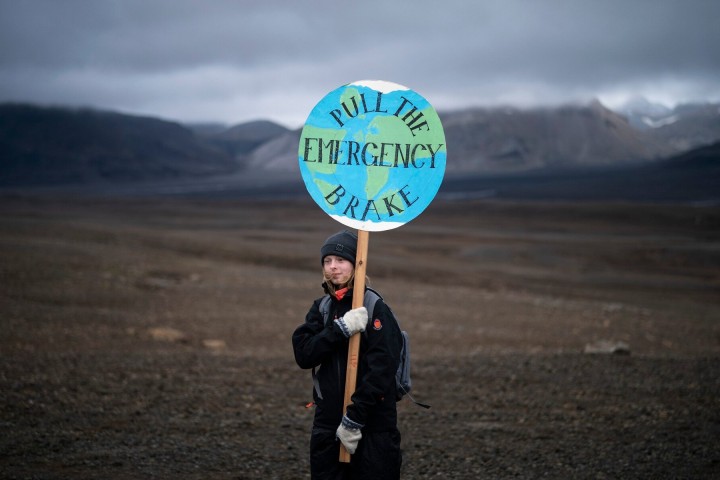Climate Action Could Avert Nearly Half The World’s Premature Deaths

If we clean up the air for the climate, we will also avoid nearly half of premature human deaths, according to a leading global health expert (Photo by Rita Franca/NurPhoto via Getty Images)
Now the good: Mitigating the climate crisis, according to a global health expert, would eliminate nearly half of the world’s premature deaths.
“When you think about what it means to get to a low-carbon economy, and what it could mean for our health, this is an amazing opportunity,” said Jonathan Patz, director of the Global Health Institute at the University of Wisconsin at Madison. “Solving the global climate crisis is the greatest health opportunity of our times, and a low-carbon future could improve global health and achieve economic benefits.”
The costs and potential benefits are concentrated in the three sectors driving global warming: energy, food, and transportation.
Energy: Air pollution from fossil-fueled energy production causes an estimated 8 million premature deaths every year, according to a recent Harvard study. Clean energy might cost $30 more for each ton of avoided carbon pollution, Patz said, but the health benefits are worth $200 per ton.
When we prevent carbon pollution from the burning of fossil fuels, especially coal, he said, we’re also preventing the particulate pollution, sulfur dioxide, lead, and mercury that cause disease.
Food: “Our energy intensive diet—especially from eating red meat—is very harmful to the environment but also harmful to our health,” Patz said. It causes an estimated 11 million premature deaths per year.
Transportation: And our reliance on the privately-owned automobile promotes a sedentary lifestyle, he said, that causes an estimated four million premature deaths per year.
“If you add up those numbers across these three sectors, we’re talking about nearly half of all premature deaths every year. So it’s an incredible opportunity if we can get to a low-carbon economy.”
If we don’t get a low-carbon economy, Patz said in a talk this month hosted by the University of Chicago’s Mansueto Institute for Urban Innovation, we can expect the bad news for health to arrive in the following forms:
1. Water Contamination
People will be exposed to more harmful contaminants from both drinking water and recreational uses of water, Patz said, in a warmer climate.
“My team did an assessment of your city’s drinking water and found that because of projections of extremes in more rainfall intensity, by mid-century Chicago could see a doubling in the number of combined sewage overflow events,” he said.
“There are many communities still they can’t afford to separate storm-water runoff from sewage, and so there are many places where it rains if rains too hard you have sewage-contaminated stormwater that overflows into our lakes and streams. And that happens in the United States already. More than a trillion gallons overflow into lakes and streams every year. It’s going to get worse, with climate change, so Chicago may see a doubling in the number of these events.”
2. Asthma
Most emergency room visits caused by flooding involve asthma complaints, Patz said, because of mold growing in people’s homes. But increased rainfall and warmer weather will also mean more pollen and longer allergy seasons.
“Were seeing in our state the ragweed pollen season has increased by 13 days.”
3. Mosquito-Borne Diseases
Yellow fever, dengue fever, zika virus: expect more incidents of these diseases spread by mosquitoes, Patz said, and expect them in more places.
“The body temperature of that mosquito will determine the replication rate and development rate and biting rates, and these are really important with transmission dynamics.”
4. Viral Pandemics
“There’s some evidence certainly with other bat-borne viruses that deforestation has a lot to do with the disease emergence,” Patz said.
“Climate change could be disrupting bat migration and changing the species richness of bats and the viruses they carry, and it may have been a contributing factor to the emergence of both the first SARS virus, SARS COVID-1 and our current SARS COVID-2 that’s causing the present pandemic. We don’t know this for sure, but it’s certainly something that’s worth looking at as far as the origins of this bat-borne coronavirus.

